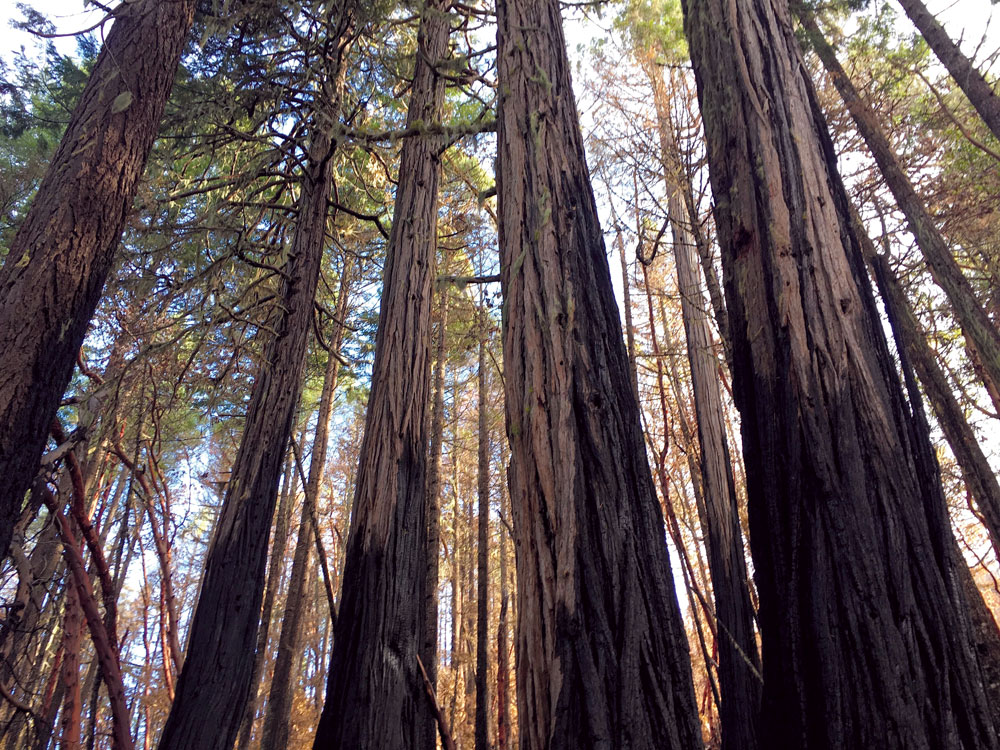Climate-Smart Conservation in the Klamath Mountains

Klamath-Siskiyou Wildlands Center
By Alexi Lovechio
Here in northern California we are surrounded by one of the largest carbon reserves in the Northern Hemisphere. Forests capture and store carbon, which helps offset pollution that causes climate change. Old-growth forests—containing trees that are often centuries old in a rich bed of living soil—are extremely efficient at capturing and retaining carbon. This is a huge asset. Our forests and wildlands are part of a natural solution to climate change, and how we manage them will help determine the fate of our climate.
Many scientists are calling for a new approach to land and forest management known as “climate-smart” conservation. This is a method to ensure that climate change is factored into how land managers make decisions. This approach augments an ecosystem’s ability to adapt to a changing climate and become resilient to increased disturbances such as wildfire. To help incorporate climate-smart strategies, scientists have begun conducting climate-vulnerability assessments—an in-depth look at how climate change is going to affect different resources in a specific area.

photo by KS Wild
Northern California Climate-Adaptation Project
Fortunately, this work is getting started in California. The Northern California Climate Adaptation Project, composed of scientists from the U.S. Forest Service Pacific Southwest Region, Bureau of Land Management (BLM), and EcoAdapt (www.ecoadapt.org), have partnered to conduct a vulnerability assessment and develop climate-informed adaptation strategies for focal habitats and species of northwestern California. This project is specifically focused on the Six Rivers, Klamath, Shasta-Trinity, and Mendocino National Forests and BLM lands in the Arcata, Redding, and parts of the Ukiah field offices.
By first understanding how climate change is going to affect certain habitats and species, we can then begin to take the necessary steps to prepare. This effort provides information and tools for federal agencies when designing forest management plans. It also assists conservationists’ efforts to prepare for climate impacts in the region. By updating how our federal forests are managed, we can ensure that forests continue to capture and store carbon.
Vulnerability assessments for northern California habitats and species can be found here: http://ecoadapt.org/programs/adaptation-consultations/norcal.
Northwest Forest Plan
Since 1994 the Northwest Forest Plan has guided management of 25 million acres of national forest in the Pacific Northwest, including over eight million acres in northern California and southern Oregon’s Klamath Mountains. The U.S. Forest Service is set to update this plan, which will guide how our national forests are managed for the next 15–20 years or more.
Certainly, there is a need for an update. In 1994 we did not know nearly as much about climate change and the impacts it would have on fire severity, water quality, and wildlife habitat as we do today. The Northwest Forest Plan should be updated to ensure that climate-adaptation strategies guide land management on national forests in northern California. These strategies include identifying the most vulnerable watersheds, recreation areas, and habitats and then shaping land-management projects to lessen and mitigate the impacts of climate change.
With a large percentage of northern California being public land, managers at the Forest Service and BLM serve critical roles in reducing the most severe impacts of climate change. How we decide to manage our public rivers, forests, and landscapes will determine just how nature will fare into the future.
For more information: www.kswild.org
